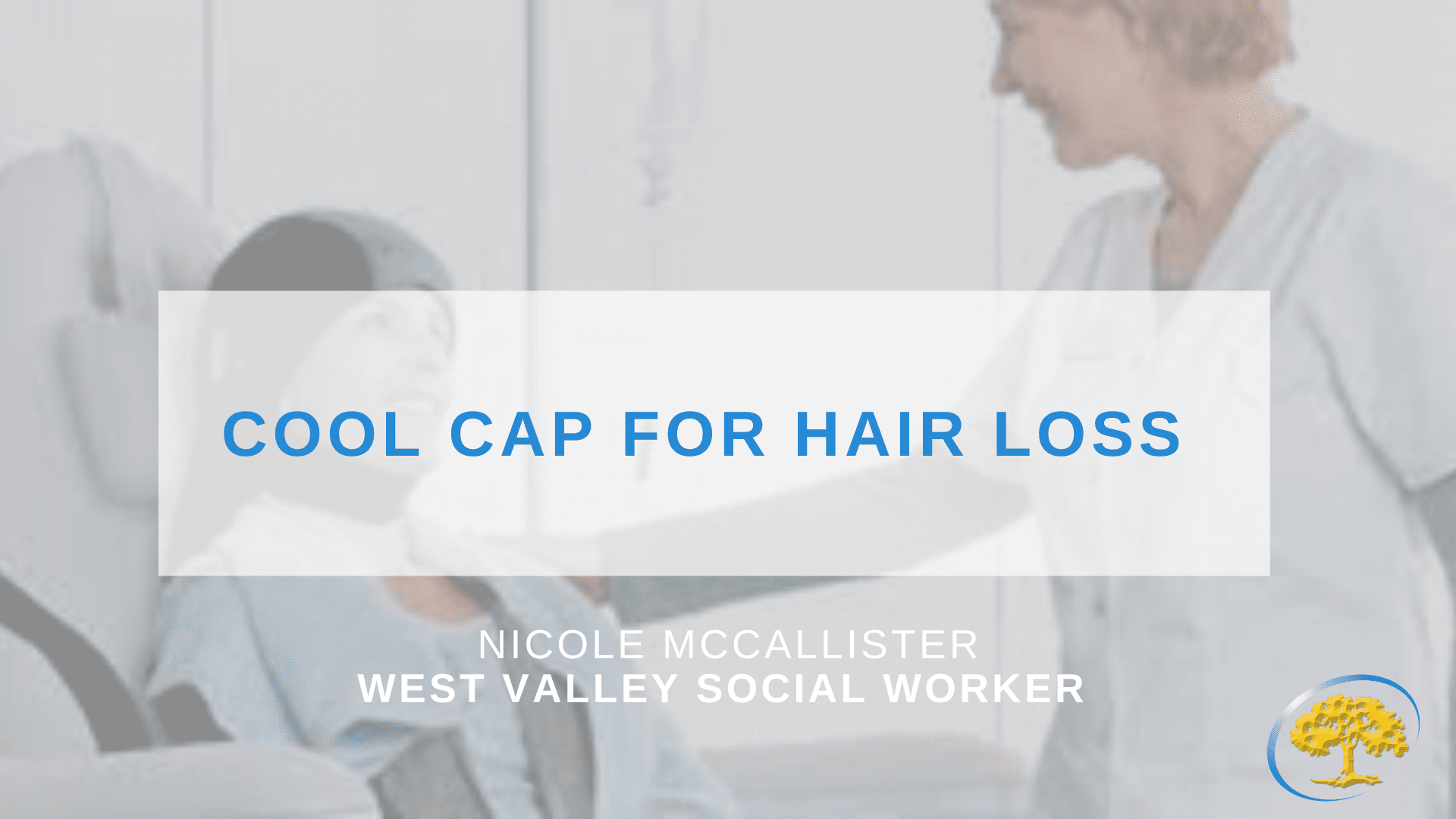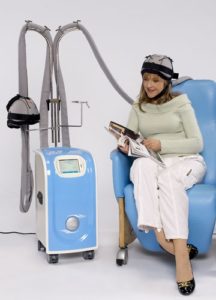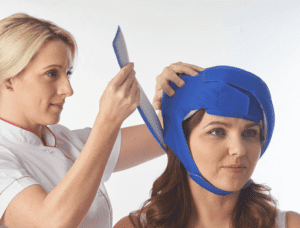
Posted 3 years ago
Cool Cap for hair loss
One of the challenging side effects of some chemotherapies used to treat cancer is hair loss. Not all chemotherapy treatments cause an individual to lose their hair or have hair thinning. This can be very emotional and distressful for a patient.
During conversations with your Oncologist prior to beginning treatment, they may mention cooling caps as an alternative to hair loss. There are no guarantees that the products will work and cooling caps are not covered by your insurance. Patients can seek out the caps and pay for them on their own for use at Ironwood. We would like to take a moment to share some facts and research on the use and success of these products.
What are cooling caps? Scalp cooling systems and cold caps are tightly fitting, helmet-type hats filled with a cold gel or liquid coolant. Scalp cooling works by narrowing the blood vessels beneath the skin of the scalp, which reduces the amount of chemotherapy medicine that reaches the hair follicles. With less chemotherapy medicine reaching the follicles, the hair is less likely to fall out.
Research has shown that scalp cooling can help some people keep some or quite a bit of their hair during chemotherapy. Hair loss happens because most chemotherapy medicines target all rapidly dividing cells — healthy cells as well as cancer cells. Hair follicles, the structures in the skin, filled with tiny blood vessels, that make hair, contain some of the fastest-growing cells in the body.
How will I use them? During each chemotherapy infusion, you wear the caps or scalp cooling system hat for 30 to 50 minutes before the infusion, during the infusion, as well as a period of time after the infusion. Some caps need to be worn up to four hours after your treatment is complete. This could require you to have the cap on for five hours plus the length of your treatment. Patients need to start using cold caps with their first chemotherapy infusion because sometimes even after one infusion, hair can fall out. How long you wear the hat after the chemotherapy session depends on the type of chemotherapy you are getting and the type of cold caps or scalp cooling system you use.
Are they guaranteed to prevent hair loss? There is no guarantee that. Even when patients follow the instruction perfectly, some individuals still experience full or partial hair loss.
The effectiveness of scalp cooling for preserving hair seems to depend heavily on the type of chemotherapy regimen used. Studies suggest that scalp cooling is more effective for Taxane chemotherapy regimens than for anthracycline chemotherapy regimens.
Taxane chemotherapy medicines used to treat breast cancer are:
- Taxol (chemical name: paclitaxel)
- Abraxane (chemical name: nab-paclitaxel)
- Taxotere (chemical name: docetaxel)
Anthracycline chemotherapy medicines used to treat breast cancer are:
- Adriamycin (chemical name: doxorubicin)
- Ellence (chemical name: epirubicin)
- Doxil (chemical name: liposomal doxorubicin)
- daunorubicin (brand names: Cerubidine, DaunoXome)
- mitoxantrone (brand name: Novantrone)
A recent randomized clinical trial tested the technology in 236 patients being treated for breast cancer. In 184 patients who could be evaluated, researchers found that, after a median of four cycles of chemotherapy, 50% of women who used the devices kept their hair; among those who took a less aggressive chemotherapy regimen, about two-thirds avoided hair loss.
Another study yielded these results. With a chemotherapy called paclitaxel, the retention rate with scalp cooling was 100%. We define “hair retention” as losing less than 50% of your hair and not needing a wig or other covering. With anthracycline chemotherapies like Adriamycin (doxorubicin), in our study, the hair retention rate was around 20%.
Reported side effects for use of the caps include pain from the intense cold, overall feeling cold requiring very warm outfits worn, claustrophobia and mild anxiety, cold-induced migraines, and discomfort from the fit of the cap. Talk to your doctor about how to manage these side effects or address them safely in conjunction with your treatment.
People who use scalp-cooling systems during chemotherapy are advised to baby their hair during treatment by:
- not blow drying or using hot rollers or straightening irons
- shampooing only every third day with cool water and a gentle shampoo
- not coloring until 3 months after chemotherapy is done
- gently combing and brushing

Several other brands are not FDA approved but recommended for use by some medical professionals and facilities. Please contact them for current information and pricing.
Insurance coverage for cooling caps is not a standard item of coverage. Generally, these products are rented. The average cost for renting the caps plus dry ice for storage is $425 a month. The Rapunzel Project is a nonprofit organization dedicated to helping women and men undergoing chemotherapy access and use scalp-cooling technology to help keep their hair. Visit the Rapunzel Project site for more information. Also, the Hair to Stay Foundation offers grants to pay for scalp cooling costs.
If you are interested in cooling caps and have not yet begun chemotherapy, talk to your doctor about how they work and to determine if you are a good candidate for the products. You will need to coordinate with your oncology nursing team as use of the caps requires additional space in the infusion room for you, your products and cooler, as well as a guest to assist you. Patients require an individual to assist them in changing out the caps and ensuring the products stay cold enough for proper use.

